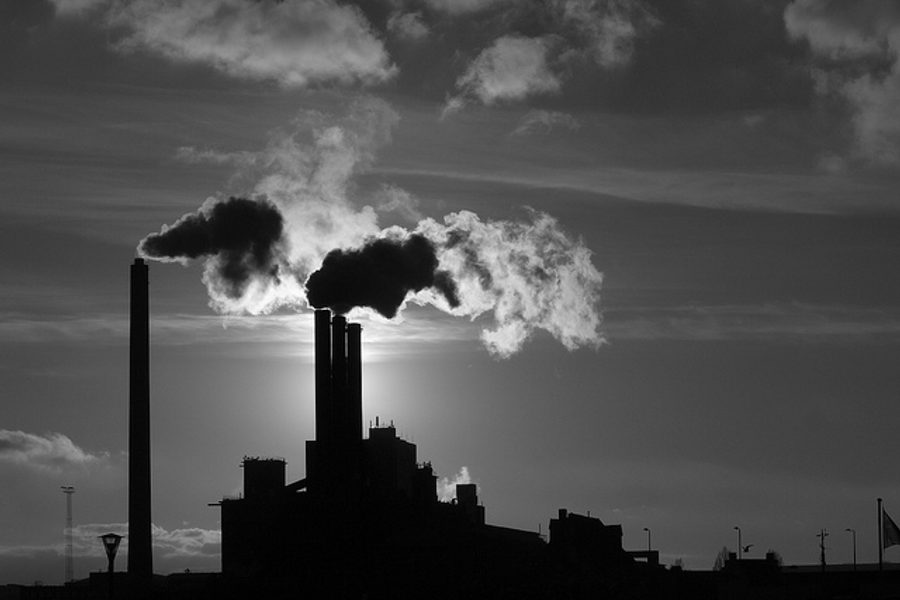What Liberal Supreme Court? SCOTUS Rules Against Power Plant Regulations for Dangerous Toxins
In a 5-4 decision, the court ruled that power companies can pump large levels of mercury and other toxins into the air.
Kamil Ahsan

The Supreme Court has made quite a few headlines lately, including many arguing that the court has recently taken somewhat of a left turn. Not so fast, though: Last week, SCOTUS, in a case that drew little attention, Michigan v. Environmental Protection Agency, No. 14-46, ruled against major Environmental Protection Agency (EPA) regulations that constrain the levels of mercury and other toxins that coal-fired power plants can release into the air.
In a 5-4 decision, the Court agreed with opponents of the Mercury and Air Toxins Standards (MATS) regulation — mostly industry groups and Republican-led states — that the standards put on power plants by the EPA were prohibitively expensive and that the Obama administration was wrong to impose rules in which, the court felt, the costs of instituting the standard vastly outweighed the benefits.
The Court overturned a previous decision in favor of the EPA by the Court of Appeals for the D.C. Circuit. The decision is a major success for industry groups and Republicans who have continually challenged EPA regulations on fossil-fuel companies.
The decision, penned by Justice Antonin Scalia and joined by the rest of the conservative bench, seems to validate those who feel that the Obama administration is guilty of government overreach — what Senator Mitch McConnell of Kentucky calls Obama’s “War on Coal.” But the president’s regulations should be seen as reasonable, perhaps even unambitious, limits on toxins and chemicals whose harms on human health and the environment have been well-known for decades. Now, however, even those relatively weak limits have been struck down.
The Court had plenty to say about cost. “The agency gave cost no thought at all,” thundered Scalia, later adding in a particularly bizarre (and classically Scalian) analogy: “By EPA’s logic, someone could decide whether it is ‘appropriate’ to buy a Ferrari without thinking about cost, because he plans to think about cost later when deciding whether to upgrade the sound system.”
Mercury is no luxury product
Mercury emissions are released largely due to industrial activities, particularly gold-mining and coal combustion. Today, however, due to the decrease in emissions from other sources (largely because of successful regulation), mercury is emitted predominantly from the coal and oil-fired power plants the conservative bench of the Supreme Court is so averse to regulating.
According to the EPA, “In the power sector alone, coal-fired power plants are responsible for 99 percent of mercury emissions.” When in 2011 the MATS standards were first instituted as part of the Clean Air Act, health groups across the US celebrated what were, and still are, the first national standards on mercury emissions from power plants.
The long-awaited standards went into place 20 years after they were first mandated by the Clean Air Act. After all, mercury is a notoriously dangerous pollutant. The release of mercury into water supplies and soil over the many years of industrial activity has caused such high concentrations of organic mercury throughout the food chain that pregnant women are now routinely warned about eating seafood. A lively drive is underway that is pushing to put warning labels about mercury levels on all seafood products — a step regulators have long avoided. Studies have shown dangerously high concentrations in fish and the water supplies near coal-fired power plants, and progressively lower, but significant, levels in livestock and the diets of coastal communities.
This is far from new, emerging research. The premature deaths, fetal defects, neurological and developmental disorders caused by mercury exposure have been well-known for much of the 20th century.
The EPA estimates that compliance with mercury emissions regulation would prevent 11,000 premature deaths, 4,700 heart attacks and 130,000 asthma attacks each year.
Nonetheless, the conservative bench of the Supreme Court felt that that pales in comparison to the labors coal companies will have to endure in order to comply with the regulations. Scalia wrote, “It is not rational, never mind ‘appropriate,’ to impose billions of dollars in economic costs in return for a few dollars in health or environmental benefits.”
Although many electricity generators in the U.S. have already complied, or begun to comply, with the MATS standards, resistance from the coal sector and its backers has been fierce — part of a new trend to delay regulation on the basis of technicalities and rhetoric about government overreach when no argumentative feint challenging the science can be mustered.
Losing on a technicality
More than a minor moral discrepancy exists at the heart of the court’s decision, however. When Justice Scalia referred to the benefits as being “a few dollars,” he referred to an oft-cited EPA statistic that the economic benefits of reducing mercury from power plants would be between $4 and $9 million.
According to other EPA estimates, however, the total health and related benefits of the MATS regulation were estimated to reach $89 billion — annually.
This discrepancy formed the basis of the decision. Industry groups had made the argument that the Obama administration had imposed a cost of $9.6 billion to achieve $6 million in benefits, but the EPA also claimed that the costs yielded tens of billions of dollars in benefits. This is because the regulation, wholly apart from mercury reductions, would force coal-fired power plants to install scrubbers. These scrubbers would, in addition to reducing mercury, reduce pollutants such as sulphur dioxide, other heavy metals and particulate matter. Considering these “co-benefits” substantially increases the number of dollars that could be saved by the MATS standards — at least $26 billion and at most $89 billion dollars, a year.
Unfortunately, this also fell right into the hands of fossil-fuel companies: when a handy, but erroneous, statistic like “$6 million dollars of benefits for a $9.6 billion cost” can be used to delay regulation, so be it.
Strangely, the decision conceded that these co-benefits drastically increased the score, but decided not to consider them anyway because of a technicality. Under the Clean Air Act rules, the EPA first assessed whether it was “appropriate and necessary” to regulate mercury and only then considered the costs of regulating it. The court, however, contended that the costs of regulating mercury should have been a central component of the “appropriate and necessary” consideration, possibly even preceding it, and should not have followed at a later stage.
In other words, what it came down to for the court was the fact that the EPA first decided that mercury was too harmful to be unleashed on society at large, decided to regulate it and only then proceeded to put a number on it. No matter that the EPA eventually found that they would ultimately save at least $26 billion for $9.6 billion in costs — ultimately, it was more important to the conservative bench that the EPA be scolded for prioritizing public health over fossil-fuel profits, than uphold legislation that makes complete sense. In responses Justice Scalia merely noted, “We may uphold agency action only upon the grounds on which the agency acted.”
Delaying regulation
Fossil-fuel interests have long tried to make the dictates of the Clean Air Act more and more toothless. The Bush administration tried repeatedly to gut key parts of the Clean Air and Clean Water acts, long considered the most important pieces of environmental legislation the U.S. has seen. Bush’s Clean Skies initiative, designed to make the administration seem more open to green initiatives, tried to chip away at CAA standards, allowing power plants to wait 15 more years to install control equipment and emit significantly more nitrogen oxide, sulfur dioxide and mercury than allowed under CAA standards. Under the Bush administration, the EPA modified CAA rules to exempt oil and coal-fired power plants from mercury regulations, but a federal appeals court struck them down.
While the Bush administration failed to completely chip away the mandates of the CAA, it did manage to delay the rules on mercury emissions and other toxins from being implemented on power plants.
Nonetheless, the strategy to delay regulation through legal challenges has been the major strategy of choice of Republicans in both chambers of Congress. In 2014, a nonpartisan Congressional Research Service noted that “virtually all major EPA regulatory actions are subjected to court challenge, frequently delaying implementation for years.”
Meanwhile, in a 2014 decision, while upholding the right of the EPA to regulate greenhouse gases under the CAA, Justice Scalia said, “the EPA is getting almost everything it wants.”
The Obama administration is expected release several new climate change rules to limit greenhouse gas pollution from power plants this summer, which congressional Republicans and industry are already challenging by preemptively launching legislation to block the rules. In addition, legislation to block or delay Obama’s new clean water regulation to limit pollution in lakes, rivers and streams is also being advanced.
Luckily for these Republicans, the Supreme Court approves of this strategy.







